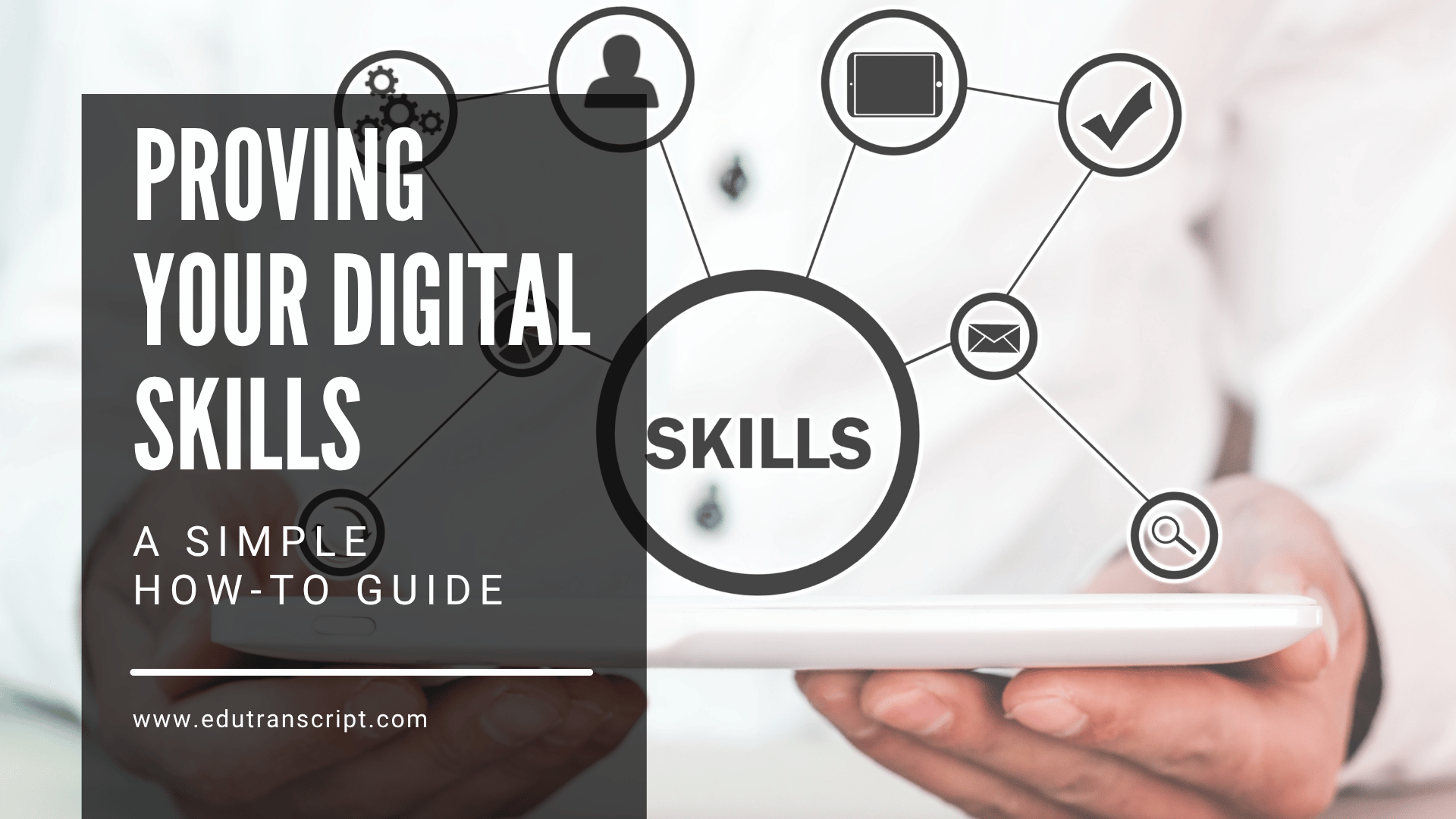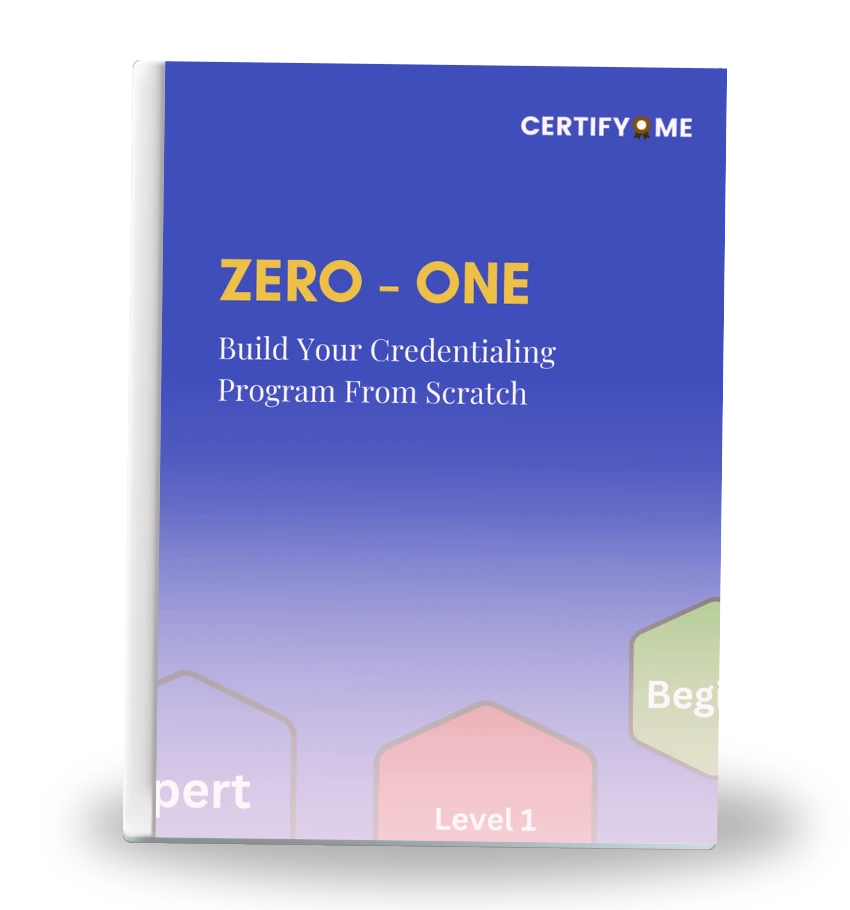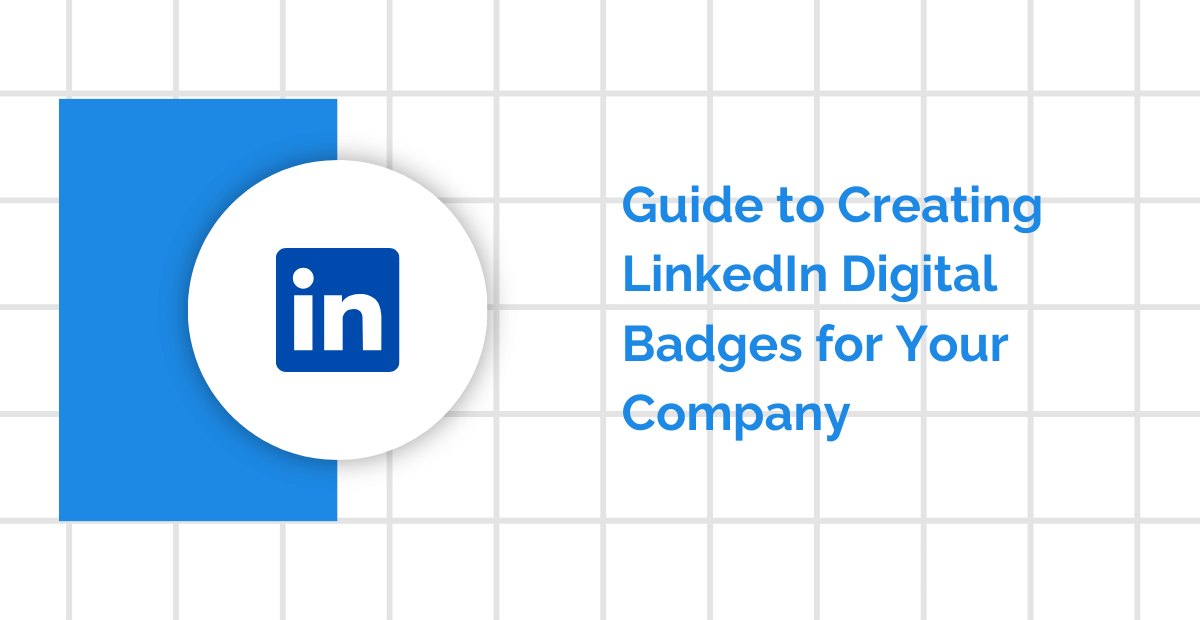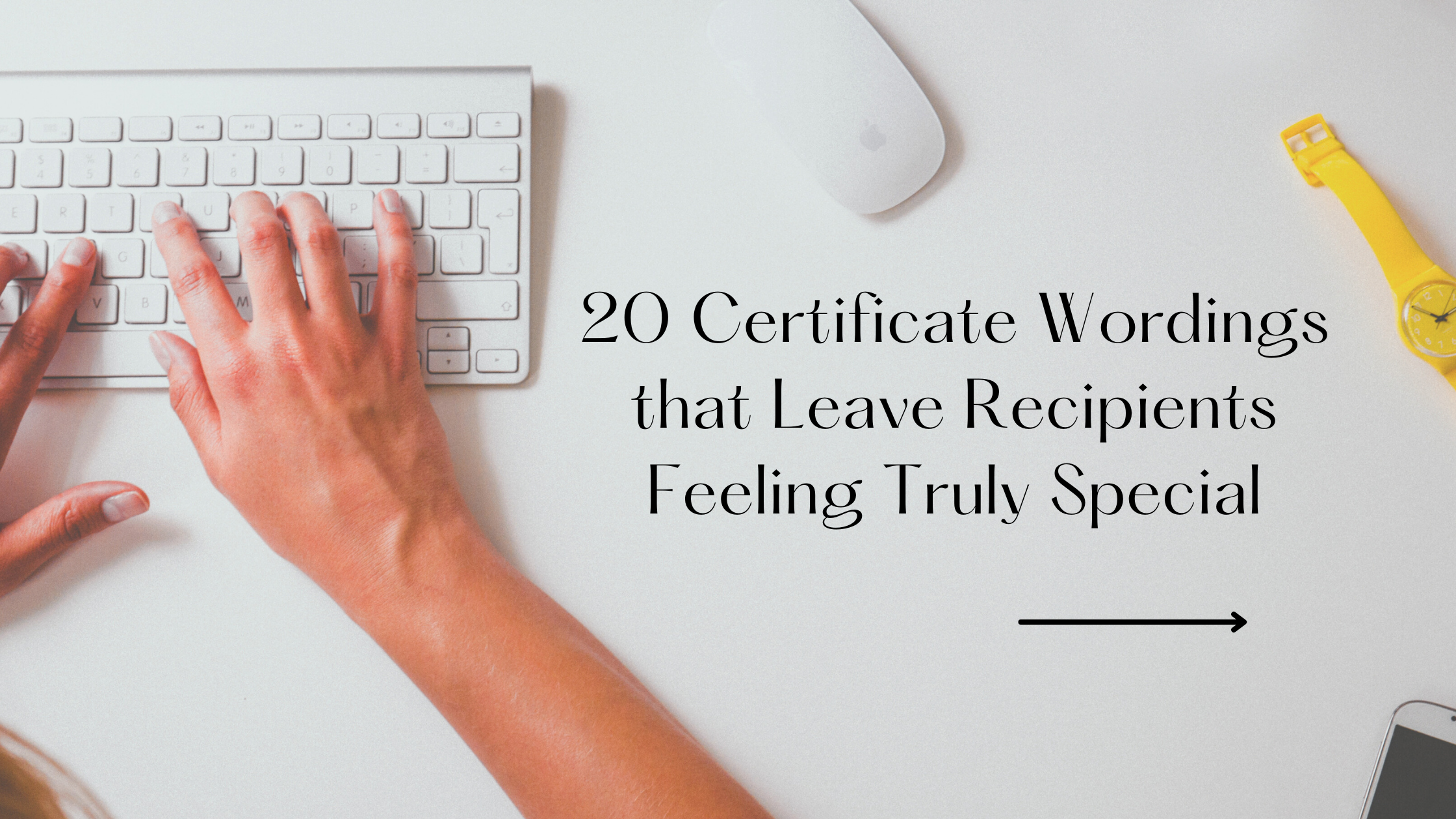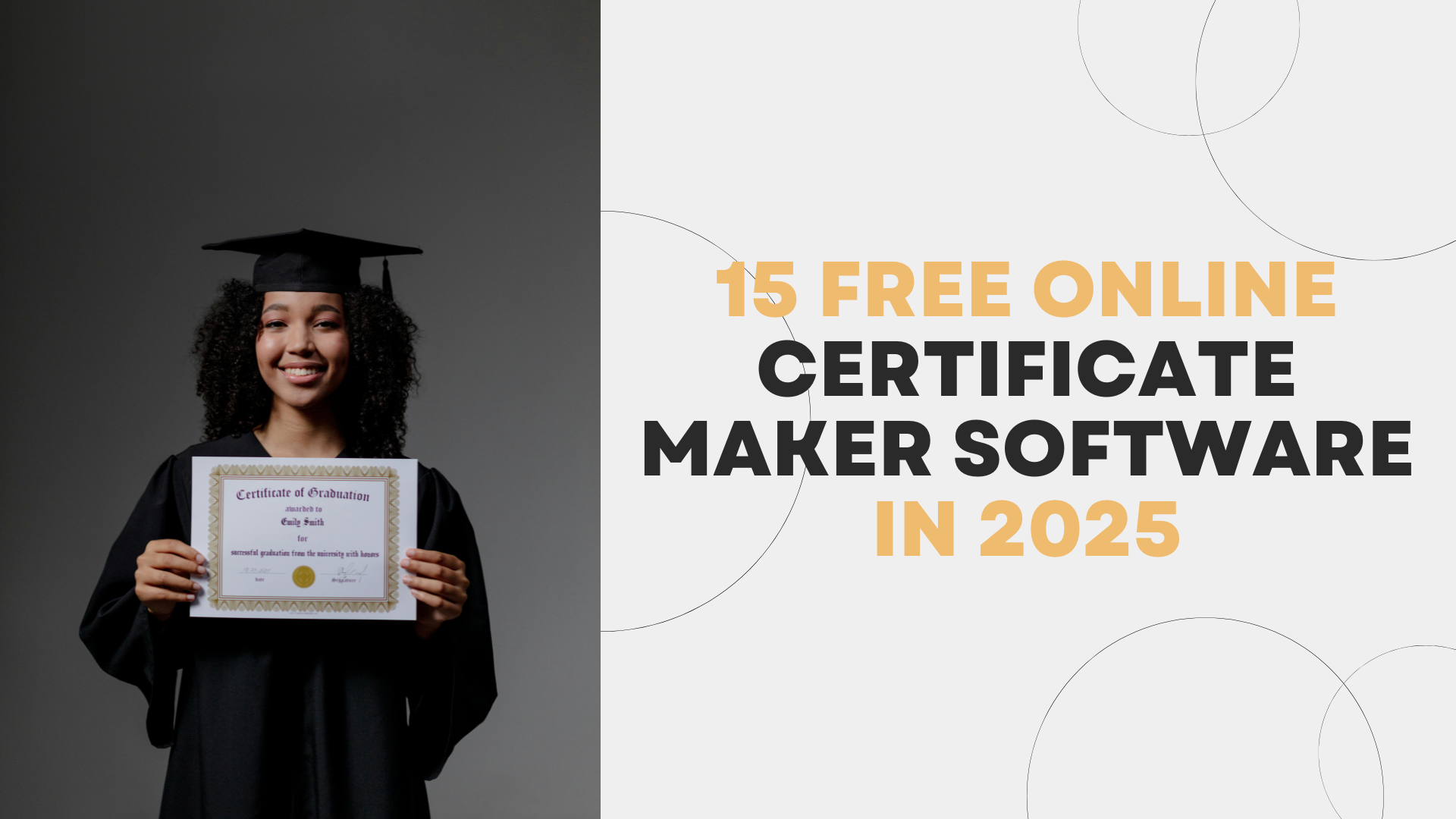Remember when just knowing how to attach a file to an email made you the “tech-savvy” one in the room?
Well, those days are behind us.
Today, whether you’re a college student applying for internships or a university administrator adapting to hybrid work, your ability to use digital tools isn’t just useful—it’s expected. And here’s the catch: it’s not enough to know. You have to prove it.
In a world where online learning, remote jobs, and virtual collaboration are the new normal, being able to validate your digital skills is quickly becoming a must-have—not a nice-to-have.
But how do you actually go about doing that? Let’s break it down.
What Exactly Are “Digital Skills”? (And No, It’s Not Just Excel)
Let’s clear something up—digital skills aren’t just about knowing your way around Excel spreadsheets or PowerPoint slides. They’re much broader than that.
In today’s world, digital skills touch nearly every task, from collaborating in Google Docs to setting up a Zoom meeting, managing a project in Trello, or even creating a flyer in Canva.
Think of them as the “soft hands” of the digital world—the little actions you do every day that help you stay organized, communicate clearly, or solve problems faster. For students, that might mean analyzing survey results in Google Forms. For university staff, it could mean navigating a student information system or updating records on a cloud platform.
There are also deeper layers—like digital communication, data literacy, basic cybersecurity awareness, and online collaboration. These aren’t just buzzwords. They’re the backbone of how most workplaces now run, especially with hybrid and remote jobs on the rise.
And here’s the kicker: even if you don’t think you’re tech-savvy, chances are you’re using digital skills already. Sending professional emails? Using shared drives? Scheduling meetings? That’s it—you’re in the club.
The real challenge isn’t learning these tools—it’s knowing how to prove you can use them well.
When we say “digital skills,” we don’t just mean knowing how to log into Zoom or type up a paper on Word. It’s broader—and more practical—than that.
Still unsure what digital credentials really are? Here’s a quick explainer that breaks it down.
Think of digital skills as your toolkit for the modern world. They include things like:
-
Using cloud-based tools like Google Workspace or Microsoft 365
-
Creating digital presentations on platforms like Canva or Prezi
-
Managing data in Excel or Google Sheets
-
Running email campaigns through tools like Mailchimp
-
Navigating learning platforms like Moodle or Canvas
-
Even knowing how to keep your data secure online
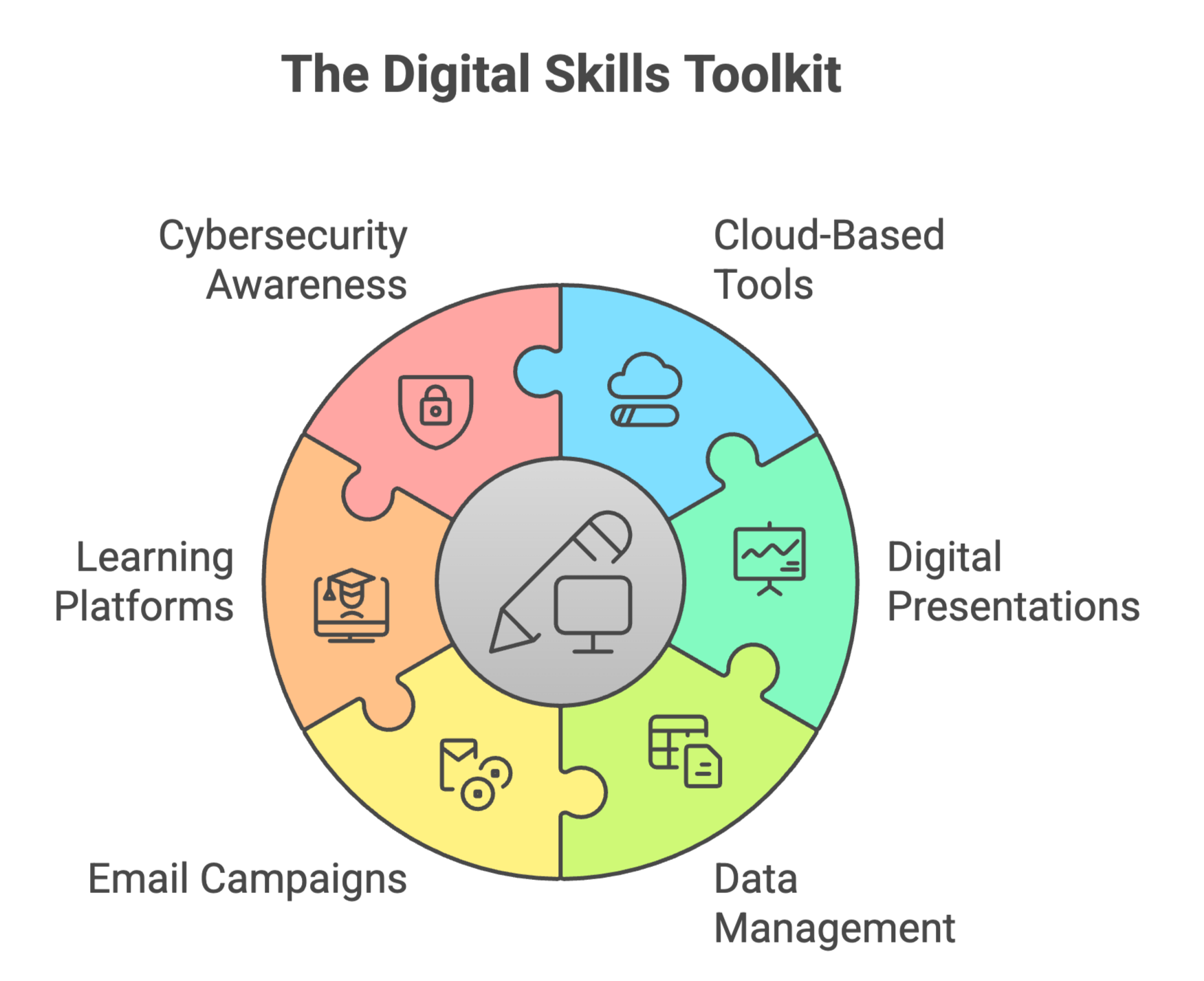
In short, digital skills mean you can get things done efficiently in an online or hybrid environment.
Whether you’re a student preparing for your career or a university staff member streamlining operations, these skills are your bridge to staying relevant.
The Problem: Just Knowing Isn’t Enough
So you know how to manage a Google Calendar like a pro. Or maybe you’ve gotten pretty good at whipping up quick designs in Canva. That’s great—but here’s the thing: how do you show someone you know that?
That’s the heart of the problem. Most digital skills are invisible unless someone’s watching you work. And in job interviews, academic evaluations, or even team collaborations, it’s not always possible to demonstrate what you can do on the spot. So what happens? Your skills get overlooked.
Degrees and transcripts don’t usually capture these micro-skills either. A sociology major who’s a wizard at data visualization? A registrar who builds automated workflows in Google Sheets?
Those details fall through the cracks. And without a way to prove what you know, you’re left hoping people just take your word for it.
That’s why validating digital skills matters. It turns invisible strengths into visible proof—something you can point to. And in a world where everyone’s resume looks kind of the same, that little proof can make a big difference.
Here’s the twist: being capable and being recognized as capable are two different things.
Let’s say you’re great at using Trello for project management. Or maybe you’ve mastered social media analytics. But when you apply for that internship or try for that internal promotion—how do you convince others you actually have those skills?
This is where validation comes in.
Without some sort of formal recognition—like a certificate, badge, or credential—your skills are invisible to others. And when you’re applying alongside dozens (or hundreds) of others, visibility matters.
So what’s the solution?
How to Validate Your Digital Skills: A Step-by-Step Guide
Let’s walk through some simple and effective ways to show the world you know what you’re doing.
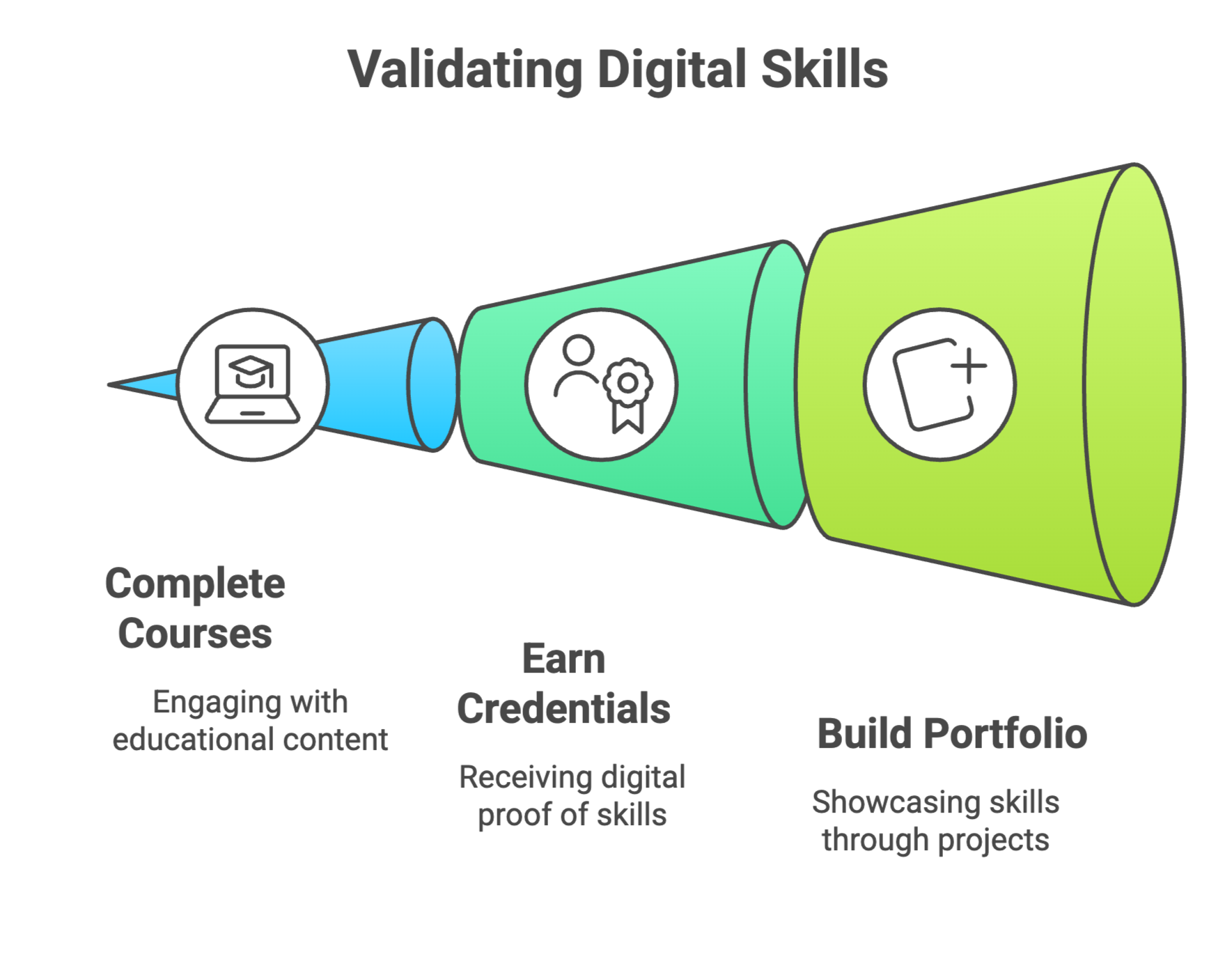
Start with Recognized Training Programs
You don’t need to sign up for a whole new degree to validate your skills. These days, there are dozens of accessible, high-quality training platforms that offer short, focused courses in every digital area imaginable.
Here are some solid places to start:
-
LinkedIn Learning: Great for professional development. Many courses offer certificates that link straight to your profile.
-
Coursera & edX: Partnered with top universities and companies. You’ll find courses ranging from data analysis to digital marketing.
-
Google Skillshop: Offers free certifications in Google Ads, Analytics, and other tools.
-
Microsoft Learn: For anyone diving into Microsoft 365, Azure, or data platforms.
Most of these courses are self-paced and take anywhere from a few hours to a couple of weeks.
Digital Badges: Think of them like micro-awards. Each badge usually represents a specific skill or learning outcome.
Not sure what digital badges and certificates actually do for your career? Here’s a guide to how they help strengthen your abilities.
Earn Digital Credentials (Badges + Certificates)
Once you complete training, you often receive digital credentials.
Now let’s pause here—what does that mean?
-
Digital Certificates: These are formal documents showing you’ve completed a course or training.
-
Digital Badges: Think of them like micro-awards. Each badge usually represents a specific skill or learning outcome.
These credentials are portable and verifiable. You can add them to your:
-
LinkedIn profile
-
Email signature
-
Online portfolio or personal website
-
Résumé
The best part? They come with metadata—meaning anyone who clicks on your badge can see exactly what skills you earned and how.
These credentials are portable and verifiable. You can add them to your LinkedIn profile, email signature, or resume—and they’re backed by metadata that tells a fuller story.
To learn more about the advantages of using verified digital records, explore this breakdown of effective benefits.
Show, Don’t Just Tell: Build Your Digital Presence
A certificate or badge is great. But it’s even better when you can show how you’ve used your skills.
Here are a few simple ways to do that:
-
Create a portfolio using free platforms like Notion, Wix, or Google Sites
-
Post project summaries on LinkedIn
-
Write a blog reflecting on what you learned during a course
-
Offer to help a student club with a digital campaign or analytics project—and document the results
Real Life, Real Proof: Meet Chris and Sam
Let’s bring this to life.
Chris and Sam are both university seniors majoring in communications. They both know how to run social media campaigns. But Chris completed a short course on social media analytics, earned a badge, and added it to his LinkedIn and résumé.
Sam didn’t.
When a remote internship came up with a nonprofit, guess who got the callback?
Yup. Chris.
It wasn’t because he was smarter or more creative. It was because his skills were visible and verifiable.
That’s the quiet power of validation.
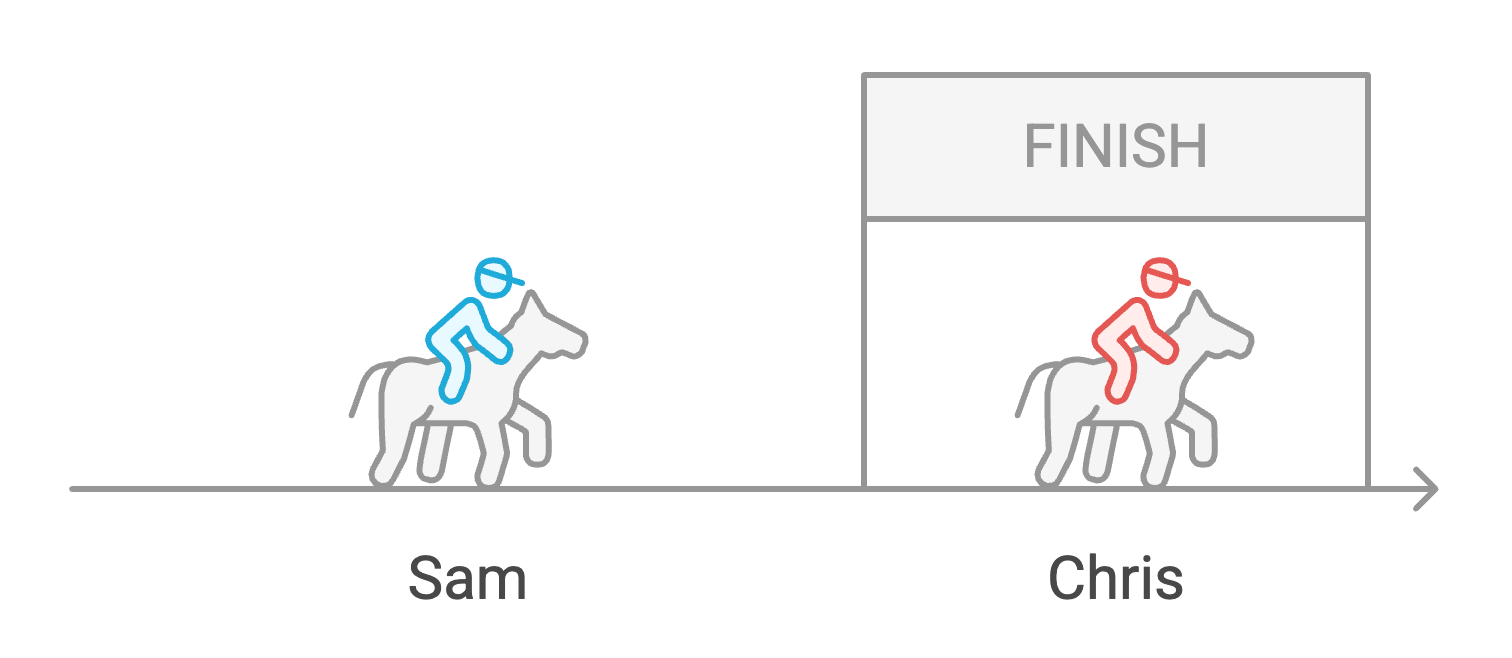
For more formal validation—like diplomas and academic records—you can also explore how institutions are validating diploma certificates through secure digital methods.
A Note for University Staff: Why This Matters for You Too
You might be thinking—“Isn’t this just for students trying to land jobs?”
Not quite. For university administrators, especially those in the Registrar’s office or career services, understanding how digital skills are validated is just as important.
Why? Because you’re often the bridge between students and the world beyond campus. Whether you’re issuing transcripts, supporting career readiness, or managing academic records, your role touches everything related to student achievement. If digital credentials—like badges or skill-based certificates—become part of the conversation (and they already are), you’ll want to be fluent in how they work.
Plus, digital credentials can actually lighten your load. When credentials are automated, verifiable, and easily shareable, it reduces manual requests, clarifies student outcomes, and builds trust with employers. Think of it as upgrading your office’s toolkit—it’s not about doing more, but about doing smarter.
And don’t forget: validating your own digital skills matters too. Tools like Excel, CRMs, or student data platforms aren’t just buttons you push—they’re proof of your ability to manage complex workflows, make data-driven decisions, and support students at scale. Imagine having badges that show that off—because yes, your work deserves recognition too.
Digital skill validation isn’t just a student issue.
For university staff, especially those working in registrar’s offices, academic advising, or student support, digital upskilling is just as important.
Here’s why:
-
Efficiency: Digital tools help streamline admin processes, from enrollment tracking to transcript generation.
-
Credibility: Earning digital credentials shows you’re keeping up with best practices—especially if you’re guiding students.
-
Professional growth: Having verifiable skills in tools like Salesforce, Banner, or data dashboards can open doors within your institution.
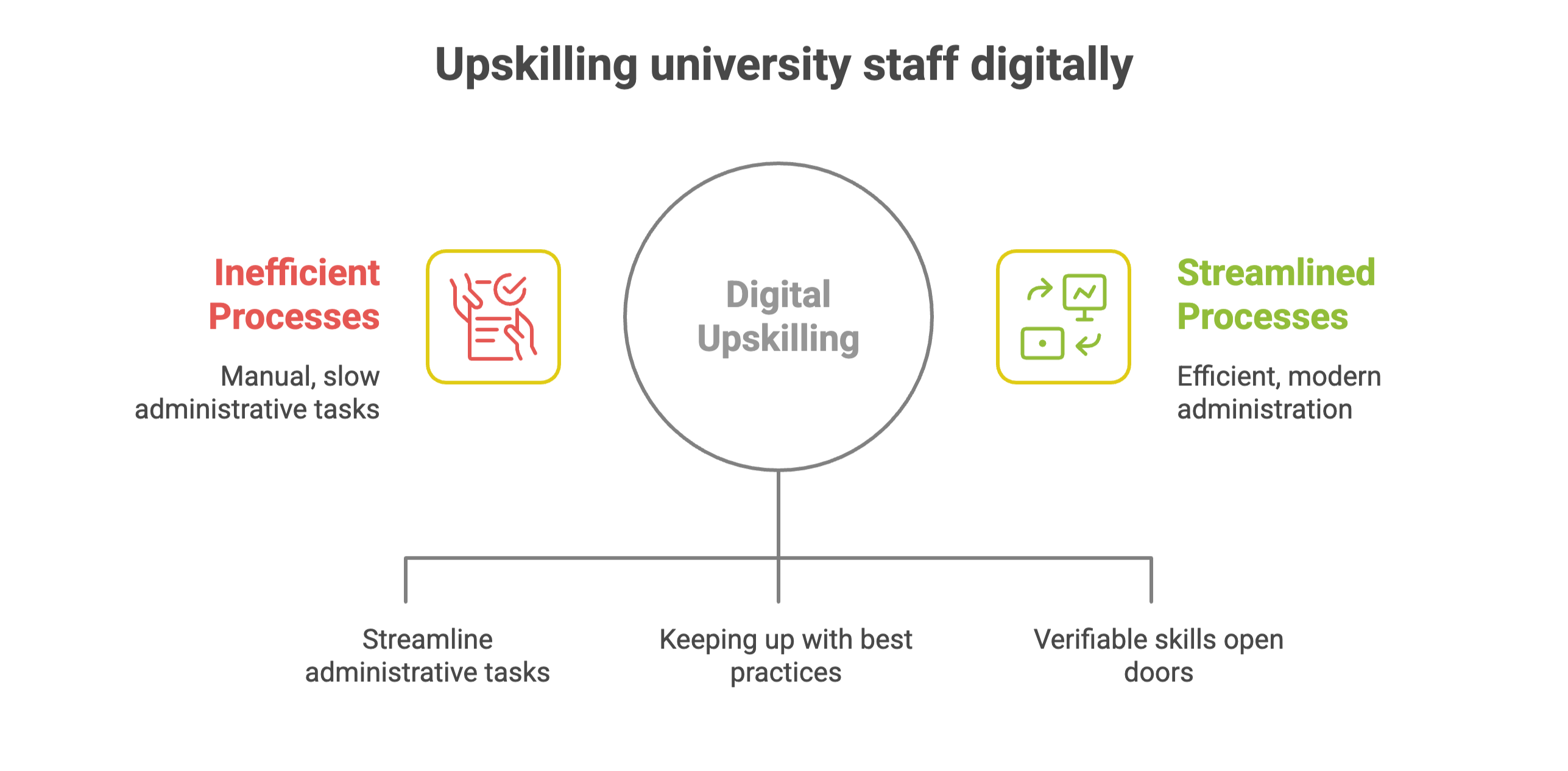
Plus, when staff members model this kind of lifelong learning, it sends a strong message to students: We’re in this digital journey together.
Some universities even integrate digital credentialing into internal training or faculty development. If yours doesn’t yet, it might be time to start that conversation.
How to Keep Up Without Burning Out
Let’s be real—it’s easy to feel like you’re always playing catch-up. New platforms, trending tools, shifting expectations—it can feel like digital skills are a treadmill that never slows down. So how do you stay current without getting overwhelmed?
Start by giving yourself permission to not know everything. You don’t need to master every app or chase every tech trend. Instead, focus on a few key tools you use often—maybe it’s Google Workspace, Canva, Zoom, or even Trello. Find short, bite-sized tutorials or micro-courses that take less than an hour. The goal? Build confidence, not pressure.
Next, make skill-checking part of your routine—not a burden. Just like checking emails or reviewing grades, set aside 30 minutes a week to brush up on something small. Over time, this turns into a habit, and habits take the stress out of staying current.
And finally, celebrate the small wins.
Earn a badge? Share it. Got faster at something? Acknowledge it. Keeping up doesn’t mean sprinting—it means pacing yourself, learning in moments, and recognizing growth along the way. Burnout isn’t about doing too much—it’s about forgetting to pause. So give yourself the space to learn at your own rhythm.
Learning something new can feel overwhelming. Especially when tech keeps changing every year (or every week).
Here are three ways to make it manageable:
-
Set micro-goals: One short course every semester can make a big difference.
-
Learn with a friend: Studying is always easier—and more fun—when you do it together.
-
Celebrate the small wins: Every badge or certificate is a step forward.
Remember, digital skills aren’t about being perfect. They’re about being prepared—and proving it.
Final Thoughts: You’ve Got the Skills. Now Prove Them.
You don’t need to become a tech wizard overnight.
But you do need to show that you can hold your own in a digital-first world.
For students, that means putting your best foot forward when applying for jobs, internships, or grad school. For university staff, it’s about staying current, staying competent, and staying connected to your community.
So go ahead. Pick a course. Earn a badge. Build your portfolio.
Because when it comes to digital skills, it’s not just what you know—it’s what others know you know.
TL;DR (Too Long; Didn’t Read)
-
Digital skills = tools to thrive in a tech-driven world
-
Knowing isn’t enough—you need to prove it
-
Use platforms like Coursera, LinkedIn Learning, and Google Skillshop
-
Earn badges and certificates to validate your skills
-
Share them publicly—on LinkedIn, portfolios, or resumes
-
Validation helps both students and university staff
-
Start small, stay consistent, and celebrate your progress
Conclusion: You’ve Got the Skills—Now Let the World See Them
Knowing how to use digital tools is one thing—proving you can is another. Whether you’re organizing events with Google Calendar or analyzing survey data in Excel, your skills are real and valuable. But unless they’re visible, others might miss them. That’s where validation steps in—it gives your work a voice people can see and trust.
Start small. Pick one skill you already use, find a quick course, and earn a digital badge for it. Add it to your résumé, LinkedIn, or even your email signature—make it easy for others to notice. Over time, these little signals add up and paint a bigger picture of who you are and what you can do.
If you’re ready to make your digital skills visible—really visible—CertifyMe makes it easy.
Their digital credential platform helps students and staff issue, earn, and share verified badges and certificates in just a few clicks. It’s simple, secure, and built for everyday learners like you.
Curious? Book a demo call and see how CertifyMe can support your goals.

 Author :
Author : 